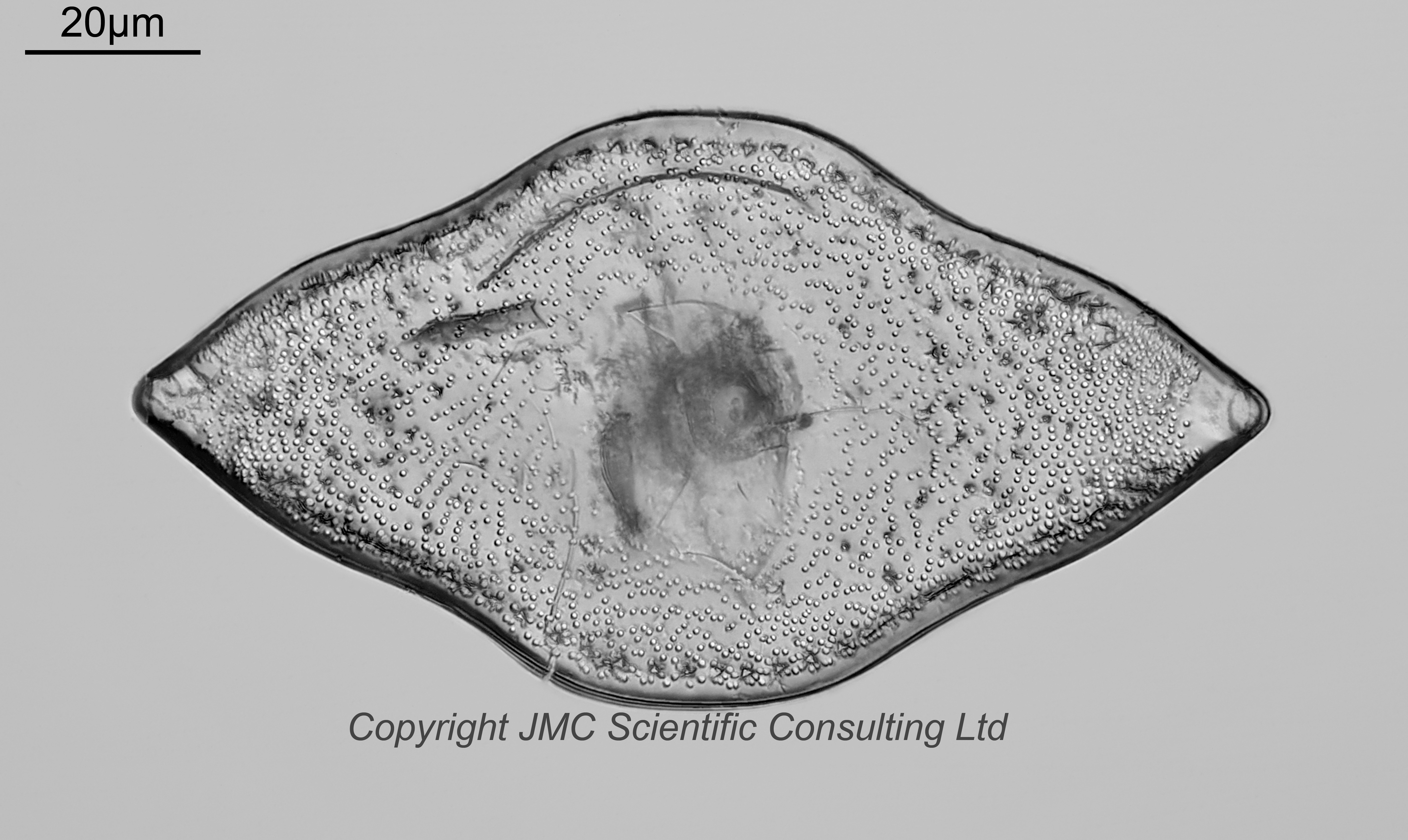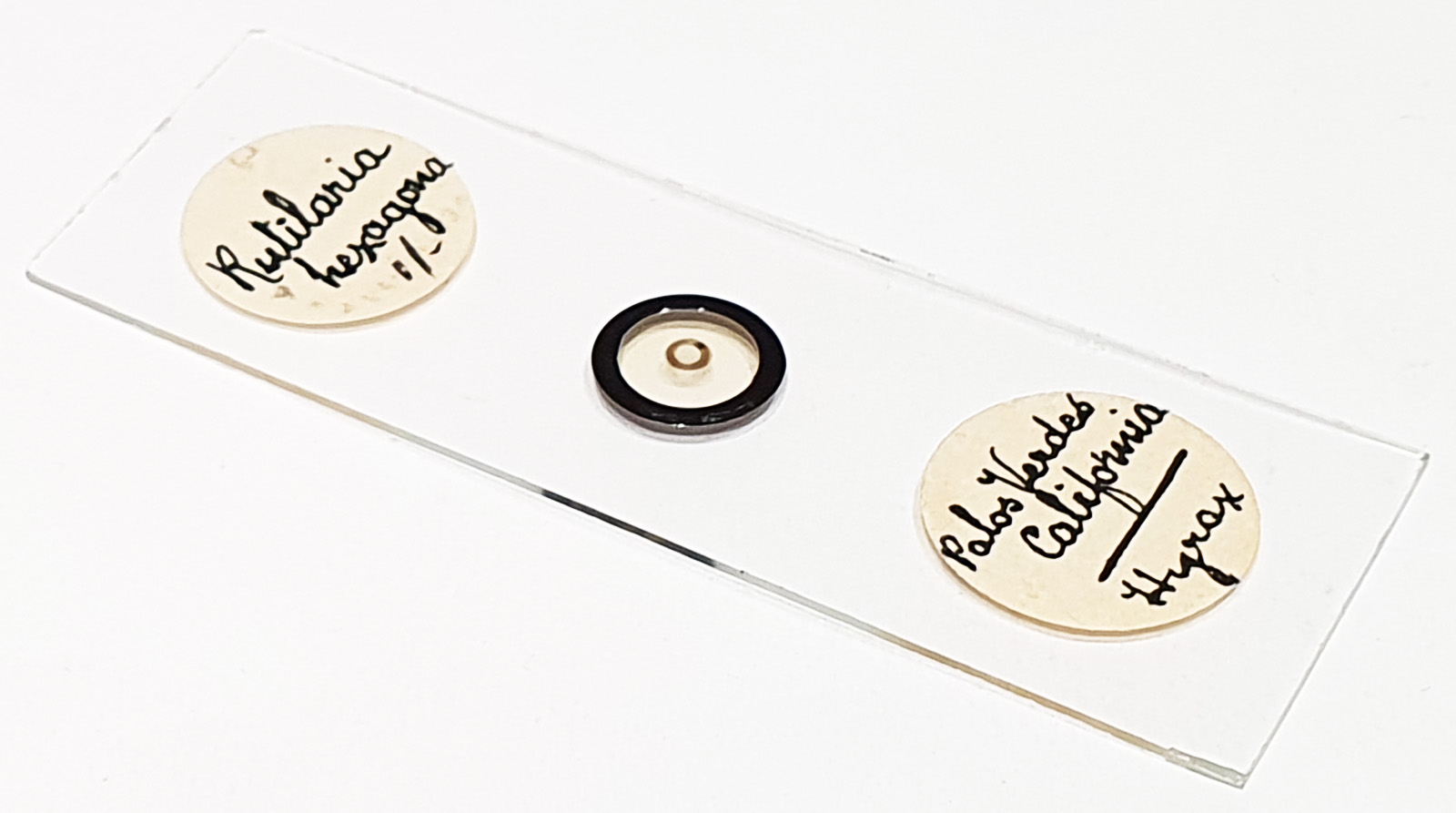

A slide of Rutilaria hexagona from Palos Verdes, California. Single example on the slide. Mounted in Hyrax. No makers name, but this looks like ones by JA Long. This is the top view of the lower half of the diatom. Olympus BHB microscope using 450nm LED light. 63x Leitz Pl Apo 1.4 objective, oil immersion. Olympus Aplanat Achromat condenser, oil immersion, oblique lighting. 2.5x Nikon CF PL photoeyepiece. Monochrome converted Nikon d850 camera. 29 images stacked in Zerene.
There is information on this name in Ross, R. (1995). A revision of Rutilaria Greville (Bacillariophyta). Bulletin of the British Museum (Natural History) Botany Series, 25(1): 1-93, 20 pls., and based on this I think Rutilaria hexagona would now fall under the name of Rutilaria obesa. R. obesa covers what looks to be a wide range of shapes (for instance, see here for another example on this site), but this does look quite like the example given in Figures 74, 75 which is from Monterey, California.